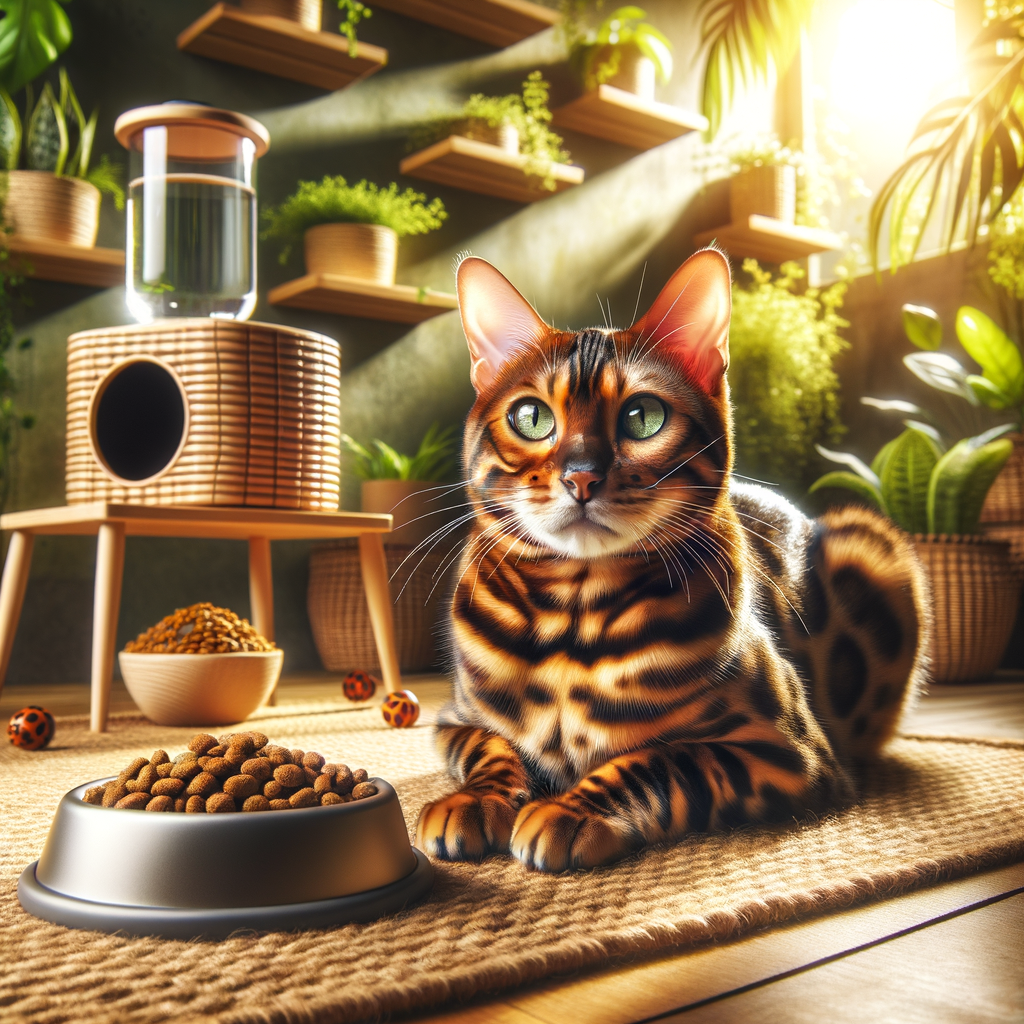
Introduction to Bengal Cat Health
- Overview of Bengal Cat Health
Bengal cats are known for their playful and energetic nature. They are generally healthy, but like all pets, they can face health issues. Common problems include heart disease, hip dysplasia, and certain infections.
- Importance of a Healthy Environment for Bengal Cats
A healthy environment is vital for Bengal cats. They need space to run and play, as well as mental stimulation. A clean living space reduces the risk of infections and stress. Providing a balanced diet and fresh water is also essential for their well-being.
The Impact of Environment on Bengal Cat Health
Bengal Cat’s Natural Habitat
- Origins of Bengal cats: Bengal cats are a mix of domestic cats and the Asian leopard cat. They are known for their wild appearance and playful nature.
- How their natural habitat influences their health: Bengal cats are naturally active and curious. They thrive in environments that mimic their wild habitat.
- Indoor vs outdoor living conditions: While outdoor living offers more stimulation, it also poses risks like traffic and predators. Indoor living is safer but needs enrichment.
- Temperature and climate: Bengal cats prefer moderate temperatures. Extreme cold or heat can affect their health.
- Exposure to pollutants and toxins: Pollutants and toxins can harm Bengal cats. Avoid using harsh chemicals in their living area.
- Respiratory problems: Poor air quality can lead to respiratory issues. Ensure good ventilation and avoid smoking near your cat.
- Skin conditions: Bengal cats can develop skin problems from allergens or poor grooming. Regular baths and a clean environment help.
- Stress and anxiety: A noisy or chaotic environment can stress Bengal cats. Provide a calm and stable home.
- Creating a safe and clean living environment: Keep your home clean and free from hazards. Use cat-safe cleaning products.
- Regular vet check-ups: Regular vet visits help catch health issues early. Schedule check-ups at least once a year.
- Proper grooming and hygiene: Brush your Bengal cat regularly to keep its coat healthy. Clean its ears and trim its nails.
- Role of diet in overall health: Feed high-quality cat food.
- Common dietary issues in Bengal cats: Bengal cats can suffer from food allergies or intolerances. Watch for signs like vomiting or diarrhea.
- Access to fresh food and water: Always provide fresh food and clean water. Change the water daily.
- Exposure to harmful substances: Keep harmful substances like chocolate, alcohol, and certain plants out of reach.
- Physical activity requirements: Bengal cats need lots of exercise. Provide toys and climbing structures.
- Importance of play and mental stimulation: Mental stimulation is as important as physical exercise. Interactive toys and puzzles are great.
- Indoor play areas: Create indoor play areas with scratching posts, tunnels, and toys.
- Outdoor safety measures: If you let your Bengal cat outside, ensure it is in a safe, enclosed area.
- Key takeaways on Bengal cat health and environment: A safe, clean, and stimulating environment is key to a healthy Bengal cat.
- Final tips on Bengal cat care: Regular vet visits, proper grooming, a balanced diet, and plenty of exercise will keep your Bengal cat happy and healthy.
| Factor | Impact on Health |
|---|---|
| Temperature | Moderate temperatures are ideal; extreme temperatures can cause health issues. |
| Pollutants | Exposure to pollutants can lead to respiratory problems and other health issues. |
| Diet | A balanced diet prevents allergies and digestive problems. |
| Physical Activity | Regular exercise is essential for physical and mental health. |
| Grooming | Proper grooming prevents skin conditions and keeps the coat healthy. |






